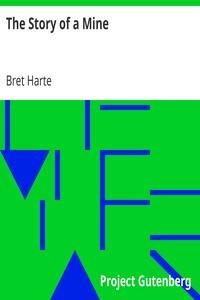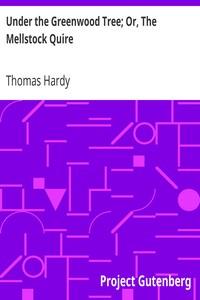Read this ebook for free! No credit card needed, absolutely nothing to pay.
Words: 53910 in 7 pages
This is an ebook sharing website. You can read the uploaded ebooks for free here. No credit cards needed, nothing to pay. If you want to own a digital copy of the ebook, or want to read offline with your favorite ebook-reader, then you can choose to buy and download the ebook.
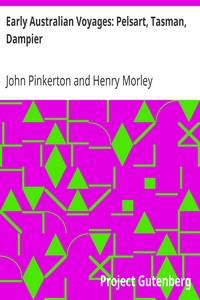

: Early Australian Voyages: Pelsart Tasman Dampier by Pinkerton John Morley Henry Editor - Voyages and travels; Pelsaert Francisco -1630; Australia Discovery and exploration; Tasman Abel Janszoon 1603?-1659; Dampier William 1652-1715 Australia
EARLY AUSTRALIAN VOYAGES BY JOHN PINKERTON
Contents:
Introduction Pelsart Tasman Dampier
INTRODUCTION.
In the days of Plato, imagination found its way, before the mariners, to a new world across the Atlantic, and fabled an Atlantis where America now stands. In the days of Francis Bacon, imagination of the English found its way to the great Southern Continent before the Portuguese or Dutch sailors had sight of it, and it was the home of those wise students of God and nature to whom Bacon gave his New Atlantis. The discoveries of America date from the close of the fifteenth century. The discoveries of Australia date only from the beginning of the seventeenth. The discoveries of the Dutch were little known in England before the time of Dampier's voyage, at the close of the seventeenth century, with which this volume ends. The name of New Holland, first given by the Dutch to the land they discovered on the north-west coast, then extended to the continent and was since changed to Australia.
During the eighteenth century exploration was continued by the English. The good report of Captain Cook caused the first British settlement to be made at Port Jackson, in 1788, not quite a hundred years ago, and the foundations were then laid of the settlement of New South Wales, or Sydney. It was at first a penal colony, and its Botany Bay was a name of terror to offenders. Western Australia, or Swan River, was first settled as a free colony in 1829, but afterwards used also as a penal settlement; South Australia, which has Adelaide for its capital, was first established in 1834, and colonised in 1836; Victoria, with Melbourne for its capital, known until 1851 as the Port Philip District, and a dependency of New South Wales, was first colonised in 1835. It received in 1851 its present name. Queensland, formerly known as the Moreton Bay District, was established as late as 1859. A settlement of North Australia was tried in 1838, and has since been abandoned. On the other side of Bass's Straits, the island of Van Diemen's Land, was named Tasmania, and established as a penal colony in 1803.
Advance, Australia! The scattered handfuls of people have become a nation, one with us in race, and character, and worthiness of aim. These little volumes will, in course of time, include many aids to a knowledge of the shaping of the nations. There will be later records of Australia than these which tell of the old Dutch explorers, and of the first real awakening of England to a knowledge of Australia by Dampier's voyage.
The great Australian continent is 2,500 miles long from east to west, and 1,960 miles in its greatest breadth. Its climates are therefore various. The northern half lies chiefly within the tropics, and at Melbourne snow is seldom seen except upon the hills. The separation of Australia by wide seas from Europe, Asia, Africa, and America, gives it animals and plants peculiarly its own. It has been said that of 5,710 plants discovered, 5,440 are peculiar to that continent. The kangaroo also is proper to Australia, and there are other animals of like kind. Of 58 species of quadruped found in Australia, 46 were peculiar to it. Sheep and cattle that abound there now were introduced from Europe. From eight merino sheep introduced in 1793 by a settler named McArthur, there has been multiplication into millions, and the food-store of the Old World begins to be replenished by Australian mutton.
The unexplored interior has given a happy hunting-ground to satisfy the British spirit of adventure and research; but large waterless tracts, that baffle man's ingenuity, have put man's powers of endurance to sore trial.
The mountains of Australia are all of the oldest rocks, in which there are either no fossil traces of past life, or the traces are of life in the most ancient forms. Resemblance of the Australian cordilleras to the Ural range, which he had especially been studying, caused Sir Roderick Murchison, in 1844, to predict that gold would be found in Australia. The first finding of gold--the beginning of the history of the Australian gold-fields--was in February, 1851, near Bathurst and Wellington, and to- day looks back to the morning of yesterday in the name of Ophir, given to the Bathurst gold-diggings.
Gold, wool, mutton, wine, fruits, and what more Australia can now add to the commonwealth of the English-speaking people, Englishmen at home have been learning this year in the great Indian and Colonial Exhibition, which is to stand always as evidence of the numerous resources of the Empire, as aid to the full knowledge of them, and through that to their wide diffusion. We are a long way now from the wrecked ship of Captain Francis Pelsart, with which the histories in this volume begin.
H. M.
Free books android app tbrJar TBR JAR Read Free books online gutenberg
More posts by @FreeBooks

: George Cruikshank by Thackeray William Makepeace - Caricatures and cartoons Great Britain; English wit and humor Pictorial; Cruikshank George 1792-1878
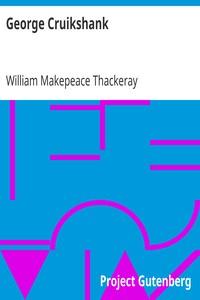

: Life and Letters of Lord Macaulay. Volume 1 by Trevelyan George Otto - Macaulay Thomas Babington Macaulay Baron 1800-1859; Authors English 19th century Biography; Historians Great Britain Biography; Statesmen Great Britain Biography
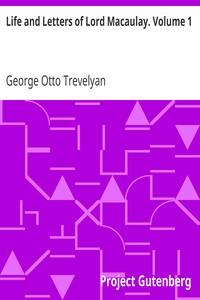

: The Story of a Mine by Harte Bret - American fiction 19th century; Mines and mineral resources Fiction
